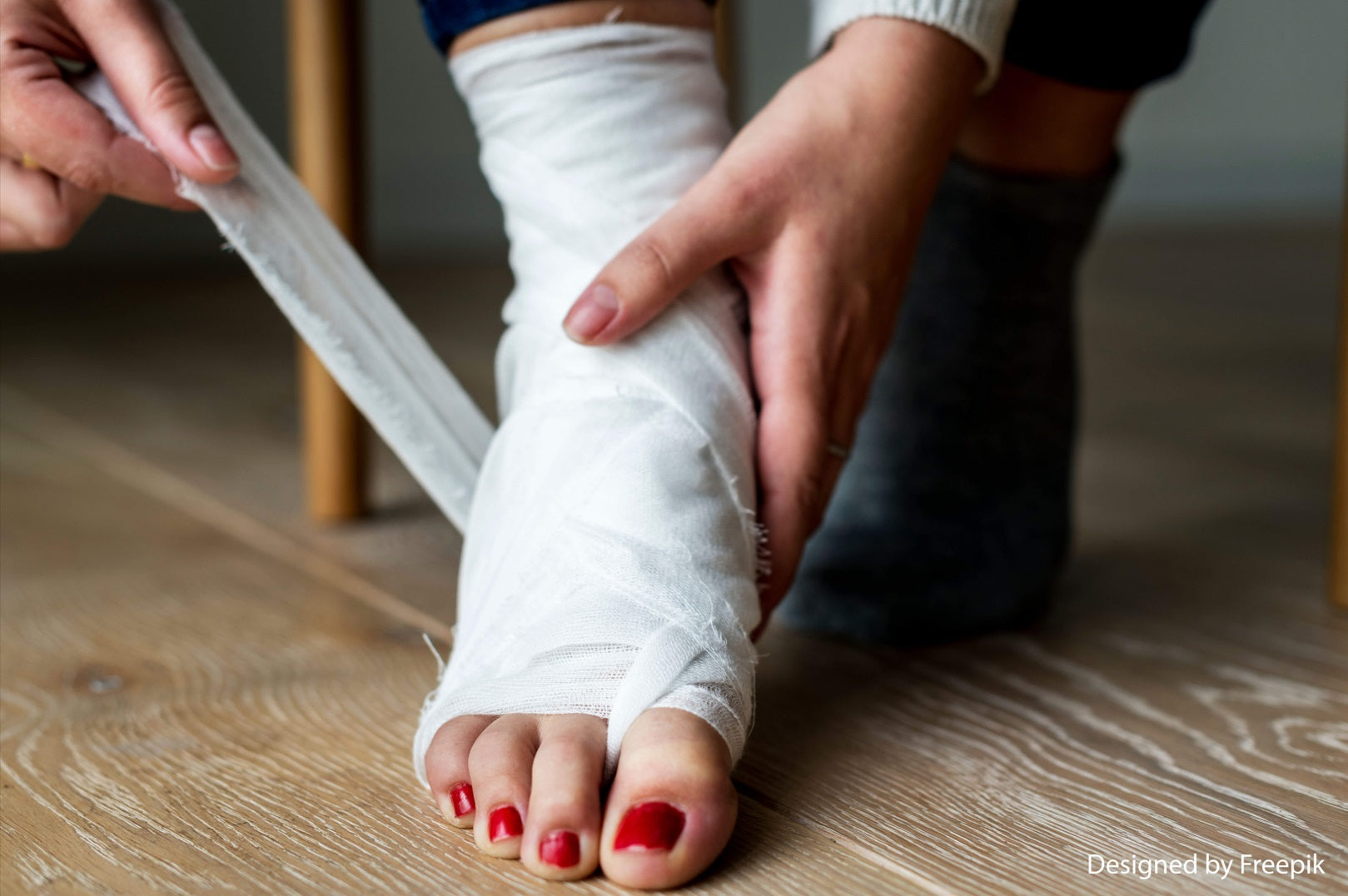
Wound Care for Diabetics: Best Practices for Healing and Prevention
Let's explore the best practices for keeping wounds in check and staying on top of your game.
Understanding the Challenges
- Poor Circulation: Diabetes can cause blood vessels to narrow and harden, reducing blood flow to the extremities. This impairs the delivery of oxygen and nutrients essential for wound healing.
- Neuropathy: Diabetic neuropathy, or nerve damage, diminishes sensation in the feet and other areas, making it easy for minor cuts or blisters to go unnoticed and untreated.
- Immune System Impairment: Diabetes weakens the immune system, making it harder for the body to fight off infections.
High Blood Sugar Levels: Elevated glucose levels can impair white blood cell function, further hampering the body’s ability to fight infection and heal wounds.
Best Practices for Healing
Diabetics should perform daily checks of their feet and other vulnerable areas for signs of cuts, blisters, redness, or swelling. Using a mirror can help you inspect hard-to-see areas.
2. Keep Blood Sugar Levels in CheckMaintaining optimal blood sugar levels is crucial for wound healing. Consistent monitoring and adherence to prescribed medication or insulin regimens can prevent complications.
3. Proper Wound CleaningCleaning wounds with mild soap and water is essential. Avoid using harsh chemicals like hydrogen peroxide, which can damage tissues and delay healing. After cleaning, pat the wound dry with a clean towel.
4. Moisturize the SkinKeeping your skin moisturized prevents dryness and cracking, which can lead to wounds. Use a diabetic-friendly lotion, but avoid applying it between the toes to prevent fungal infections.
5. Use Appropriate DressingsChoose wound dressings based on the type and severity of the wound. Moist wound healing dressings, like hydrocolloids or hydrogels, can promote faster healing. Change dressings regularly and consult a healthcare provider for advice on the best type of dressing for specific wounds.
6. Seek Professional Care for Severe WoundsFor wounds that do not show signs of healing within a few days, or for deep, infected, or large wounds, seeking professional medical help is essential. Healthcare providers can offer you advanced treatments like debridement, antibiotics, or specialized dressings.
Best Practices for Prevention
Routine foot care is critical. This includes washing feet daily, trimming toenails carefully, and wearing well-fitted shoes to avoid pressure points and blisters.
2. Regular Check-upsRegular visits to a healthcare provider, including a podiatrist, can help manage and prevent foot problems. Regular screenings can detect issues early before they become severe.
3. Manage Diabetes EffectivelyProper management of diabetes through diet, exercise, and medication is the foundation of preventing complications, including wounds. A balanced diet, regular physical activity, and adherence to medical advice are paramount.
4. Education and AwarenessEducation on proper wound care and prevention strategies is vital. Diabetics should be aware of the risks and equipped with knowledge on how to manage minor wounds and when to seek professional help.
5. Protect the FeetWearing protective footwear (such as Pembrook Diabetic Socks), avoiding walking barefoot, and using appropriate socks can prevent injuries. Diabetics should choose shoes that provide adequate support and cushioning.
6. Stay ActiveRegular exercise improves circulation, which is beneficial for overall health and wound healing. Activities should be chosen carefully to avoid foot injuries.
Conclusion
Wound care for diabetics requires diligence, proactive management, and a thorough understanding of the specific challenges posed by the condition.
By following these best practices for healing and prevention, diabetics can significantly reduce the risk of complications, promote faster healing, and maintain a better quality of life. Regular monitoring, proper wound care, effective diabetes management, and seeking professional advice when needed are the cornerstones of effective wound care for diabetics.
Sources:


